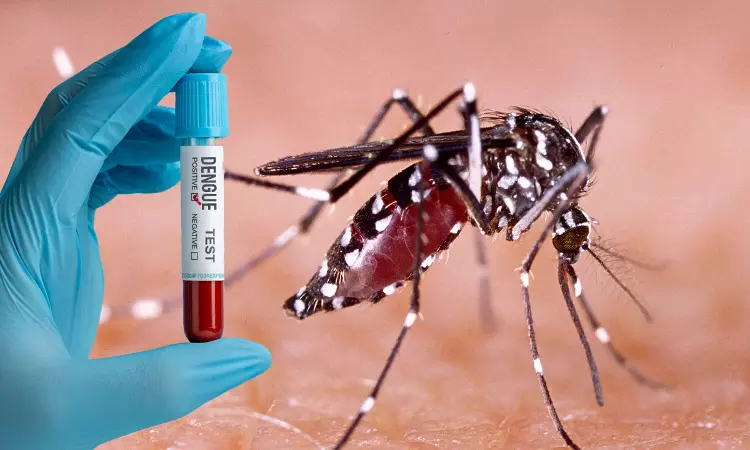Table of Contents
- Introduction
- What is Dengue?
- Current Statistics in Karnataka
- Why is Dengue Spreading in Karnataka?
- Symptoms of Dengue
- Diagnosis and Testing
- Treatment for Dengue
- Preventive Measures
- Personal Protective Measures
- Community Efforts and Government Initiatives
Dengue fever has surged dramatically in Karnataka, crossing the alarming 10,000-case threshold. With 10,449 confirmed cases and 358 active hospitalizations, this mosquito-borne disease poses a serious health threat. The situation demands urgent attention to understand its spread and implement effective prevention measures.
Dengue fever is a viral illness transmitted by Aedes mosquitoes, particularly Aedes aegypti. It manifests with flu-like symptoms and, in severe cases, can lead to dengue hemorrhagic fever or dengue shock syndrome, both potentially fatal. The spike in cases in Karnataka has raised public health concerns, highlighting the need for increased awareness and intervention.
As of July 17, 2024, Karnataka has reported 10,449 dengue cases. On Tuesday alone, 4,572 blood samples were tested, with 487 new positives, bringing the total to 78,489 samples tested. The death toll stands at eight, emphasizing the necessity for immediate and effective action to curb the outbreak. Several factors contribute to the rapid spread of dengue in Karnataka. The warm and humid climate of the region is ideal for mosquito breeding. Urbanization and increasing population density create more breeding grounds for mosquitoes, facilitating faster transmission of the virus.

Common symptoms of dengue include high fever, severe headache, pain behind the eyes, joint and muscle pain, rash, and mild bleeding. Severe symptoms can lead to plasma leakage, fluid accumulation, respiratory distress, severe bleeding, or organ impairment. Dengue diagnosis is typically confirmed through blood tests detecting the virus or antibodies. Karnataka’s health infrastructure has ramped up testing, with thousands of samples processed daily.
There is no specific antiviral treatment for dengue. Patients receive supportive care, such as hydration, pain relief, and monitoring for complications. Severe cases require hospitalization and intensive care. Preventive measures are crucial in combating dengue. Personal protective measures include using mosquito repellents and nets, wearing long-sleeved clothing, and keeping windows and doors closed or screened. Community efforts and government initiatives also play a significant role. Regular fumigation and cleaning of mosquito breeding sites, along with public awareness campaigns about prevention and early detection, are essential.
Health authorities are crucial in controlling dengue through surveillance, prompt response to outbreaks, and public education. Initiatives include extensive fumigation drives and community engagement programs. The dengue outbreak has strained Karnataka’s healthcare system. Hospitals are overwhelmed with patients, requiring additional resources and staff to manage the crisis effectively.
Individuals affected by dengue share their experiences of enduring high fever, body pain, and hospitalization. Their stories highlight the disease’s impact on daily life and the importance of timely medical intervention. Frontline medical staff recount their challenges in managing the surge in dengue cases, emphasizing the need for more resources and better preventive measures.

Dengue is often compared to diseases like malaria and chikungunya. While all are mosquito-borne, dengue’s rapid onset and potential for severe complications make it uniquely challenging. Efforts to control dengue face obstacles such as inadequate infrastructure, public compliance issues, and the persistent presence of mosquito breeding sites.
Experts predict that dengue cases may continue to rise without sustained preventive measures. Long-term strategies include enhancing public health infrastructure and ongoing community education. Combating this epidemic requires a coordinated effort from individuals, communities, and health authorities. By adopting preventive measures and supporting health initiatives, we can curb the spread of dengue and safeguard public health.

What are the first signs ? Early signs include high fever, severe headache, pain behind the eyes, and joint and muscle pain. Can dengue be fatal? Yes, severe dengue can lead to serious complications and death if not promptly treated. How long does it take to recover from ? Recovery time varies but typically ranges from one to two weeks, with severe cases requiring longer. Is there a vaccine for ? Yes, there are vaccines available, but their use depends on various factors including age and health conditions. How can we contribute to dengue prevention? Individuals can reduce mosquito breeding sites, use repellents, and participate in community clean-up efforts.
Preventing dengue requires a multi-faceted approach focusing on personal protection and community efforts. Individuals should use mosquito repellents, wear long-sleeved clothing, and sleep under mosquito nets to minimize mosquito bites. Eliminating mosquito breeding sites is crucial; this involves regularly cleaning water containers, disposing of old tires, and ensuring that gutters are free from standing water. Community initiatives, such as regular fumigation and public awareness campaigns, play a significant role in reducing the mosquito population and educating people about prevention strategies. By combining personal vigilance with community action, the spread of dengue can be effectively controlled.




Leave a Reply